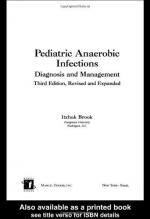|
This section contains 705 words (approx. 3 pages at 300 words per page) |

|
Anaerobes are bacteria that are either capable of growing in the absence of oxygen (referred to as facultative anaerobes) or that absolutely require the absence of oxygen (these are called obligate anaerobes). Among the oxygen-free environments in which such bacteria can grow are deep wounds and tissues in the body. Growth in these niches can produce infections.
Examples of infections are gas gangrene (which is caused by Streptococcus pyogenes) and botulism (which is caused by Clostridium botulinum). Other anaerobic bacteria that are frequently the cause of clinical infections are members of the genus Peptostreptococcus and Bacteroides fragilis.
There are a number of different types of anaerobic bacteria. Two fundamental means of differentiation of these types is by their reaction to the Gram stain and by their shape. The genus Clostridium consists of Gram-positive rod-shaped bacteria that form spores. Gram-positive rods that do...
|
This section contains 705 words (approx. 3 pages at 300 words per page) |

|


